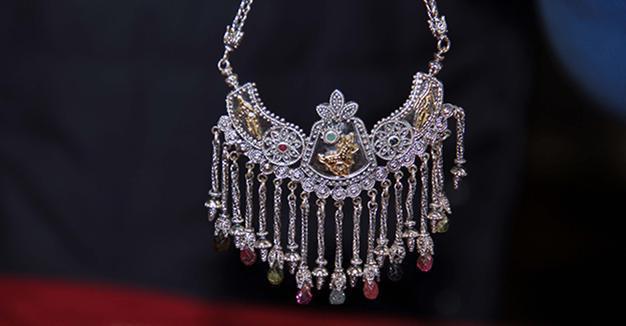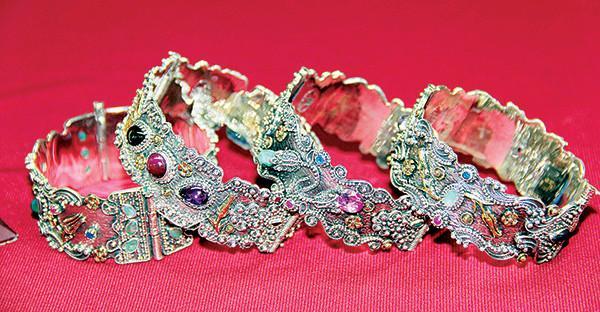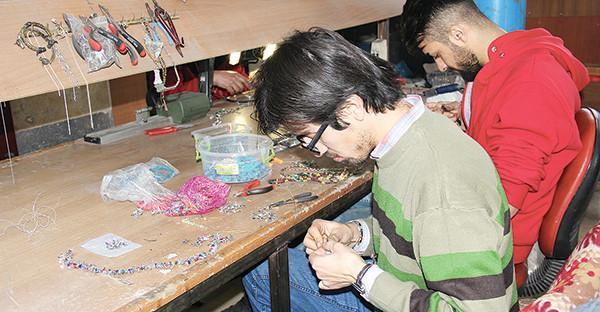Urartian motifs come to life with jewelry
VAN – Anadolu Agency

AA Photos
Long-forgotten motifs and figures from the Urartian civilization, which was centered on the eastern province of Van more than 2,000 years ago, are now being used in silver jewelry using a number of ancient techniques.
Erdal Binici, a silver worker and owner of an atelier in Van, said they had been compiling original Urartian motifs for years and embossing them on jewelry in order to prevent the motifs from disappearing. They have now created around 300 different Urartian motifs, he added.
Binici said they produced necklaces, earrings, rings and bracelets by finely embossing the Urartian motifs on 925 carats of silver.
“We have been dealing with this business for 50 years, embossing centuries-old Urartian motifs on jewelry. We find these motifs at the Van Museum, books and excavations works and add them to our archive. Our Urartian motif archive is the one and only of its kind in the world,” he said.
Binici said they used a technique called granulation, which the Urartians used in silver embossing for kings and queens.
“We do exactly the same thing as the Urartians did. This is a very hard process. A bracelet takes almost 10 days to finish. Even the smallest mistake destroys our 10 days of labor,” Binici said, noting that they created each piece of jewelry by hand.
“The Urartian were producing small balls of jewelry on wood coal with the granulation technique. We are working with the same technique today. The small balls used for ornamentation are produced on wood coal. In this way, we can have smoother balls. The small balls form the basis of the Urartian motifs,” he said.
Unsurprisingly given the labor-intensive methods employed, there are few workers outside Van currently using the technique, Binici said.
Female figure used mostBinici said each motif had a different meaning in the Urartian civilization and that female figures were used the most and male figures the least.
“The female figure was dominant among the Urartians. Women and the moon, women and the sun and [other fertility symbols] were used the most. For example, a female figure is drawn in the sun. It means women symbolize power and the sun, abundance and wealth. This is why we have many female figures in our works,” he said.
He said they also used the “aruban” figure, which symbolizes beauty, aesthetics and the goddess of art, in their work.
“The ‘sivini’ motif, which was used in necklaces worn by the Urartian queens, is also popular,” he said.
“The reverse tulip is a regional motif that dates back to the Assyrians. It symbolizes beauty, abundance and a crying bride. Lion, gazelle and goat figures are in most of the motifs. The lion symbolizes power, the gazelle symbolizes abundance and the goat symbolizes good luck,” he said.
Binici said they took care to use genuine stones, adding that the Urartians used rubies, emeralds, pearls and carnelian stones in their motifs.


